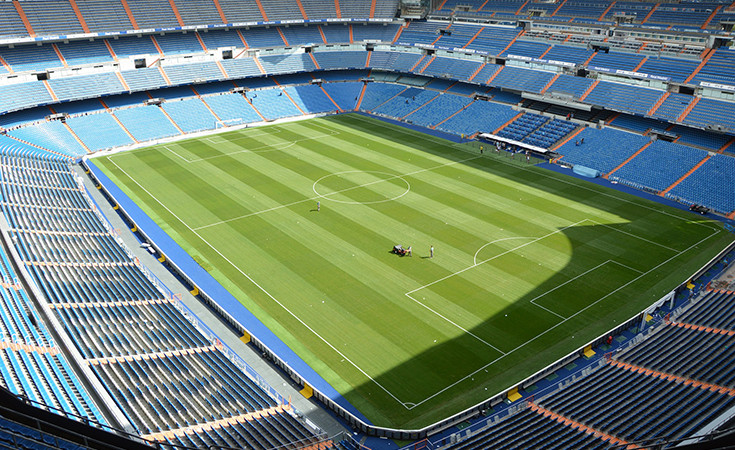
Football fans, and especially fans of the Real Madrid football club, know very well that the Santiago Bernabeu Stadium is one of 29 stadiums in Europe that are on the UEFA list as a 5-star stadium. It is one of the most attractive and most famous in the world, in the same rank as the stadium in Barcelona, Manchester, Milan, London. There are three professional football clubs in Madrid, Real Madrid, Atletico Madrid and Rayo Vallecano, and the host of several European and international football matches at the Santiago Benabeu is Real Madrid.
The stadium keeps its door open 363 days a year for visitors. A visit to the Santiago Bernabeu is a must-see tourist tour if you are in Madrid, with the help of which you will learn all about the history of the stadium and the royal football club Real Madrid. History of the stadium: The original Real Madrid stadium was in Campo De O’Donnell, and then in 1924 it moved to the larger Campo de Chamartin stadium. After 19 years of using this stadium, it became very small for the needs of the club and the then president of the club, Santiago Bernabeu, decided that Madrid needs a new and more modern stadium that will be able to accommodate up to 100.000 people.
Construction of the new stadium began in 1945, on the same site as Campo de Chamartin. The Santiago Benabeu Stadium was officially opened on December 14, 1947, with a football match with the Portuguese champion OS Belenenses. Real Madrid dominated in this match, as evidenced by the result of 3:1. Although a new stadium was built, it still bore the name Nuevo Estadio Chamartin, and in 1957 it was renamed the Santiago Bernabeu Stadium.
It was named after the legendary president of the Real Madrid club, whose club career lasted from 1943 to 1978. The stadium has room for 80.000 spectators and 245 VIP boxes. During the 1970s, the stadium began to strive for renovation, and the option of building a completely new stadium in the north of Madrid was even considered. Instead, a plan was made to renovate the Bernabeu. Construction of a roof with three two-storey grandstands and installation of seats in some parts started. Over time, the stadium sought new changes, so some work began in 1992 when the stadium was expanded, new rooms and four towers in each corner of the stadium were added.
These works were completed two years later. In 2001 and 2006, the stadium had new renovations, and new plans for the reconstruction of the stadium appeared in 2012 as well. They were on hold for a long time due to the European Union's investigation into the allocation of illegal state aid, and the city of Madrid later rejected it.
Only in 2017, plans were presented regarding the upgrade of the stadium, the construction of a retractable roof that will be able to close in 15 minutes, and a catering facility, as well as an underground garage.
According to these plans, the works on this stadium started in 2019, and their duration is expected until September 2022. The value of this renovation is around 500 million euros, and the representatives of the club believe that this will be the best stadium in the world. The official website of FC Real Madrid published a video showing the future appearance of the stadium. It is modern, impressive and innovative, which confirms the statements of the club's leaders that this will be one of the best stadiums. Four finals of the European Cup and the Champions League were played at the Santiago Benabeu Stadium.
First final - 1957 between Real Madrid and Fiorentina (2:0)
Second final - 1969 between Milan and Ajax (4:1)
Third final - 1980 between Nottingham Forest and Hamburg (1:0)
The fourth final - 2010 between Internazionale and Bayern Munich (2: 0).
Visit to the stadium: What you will see during the visit to the stadium are the players' locker rooms, the trophy hall where besides the trophies there are also club heritage (balls, photos, equipment, documents), how the stadium looks from the perspective of all spectators, from the presidential balcony, fans, coaches, players, and there are fantastic audio-visual displays of the club's history, a panoramic view of the stadium's interior, the "Best Club in History", the "Sensations" room and video and photo montages with the players.
There are two tours of the stadium visit - Classic €25 and Flexible €28.
Author of the text:

Maja Glavaš, Bachelor with Honours in Communicology. Works in Tourism.
Contact: [email protected]; instagram: travel_europe1